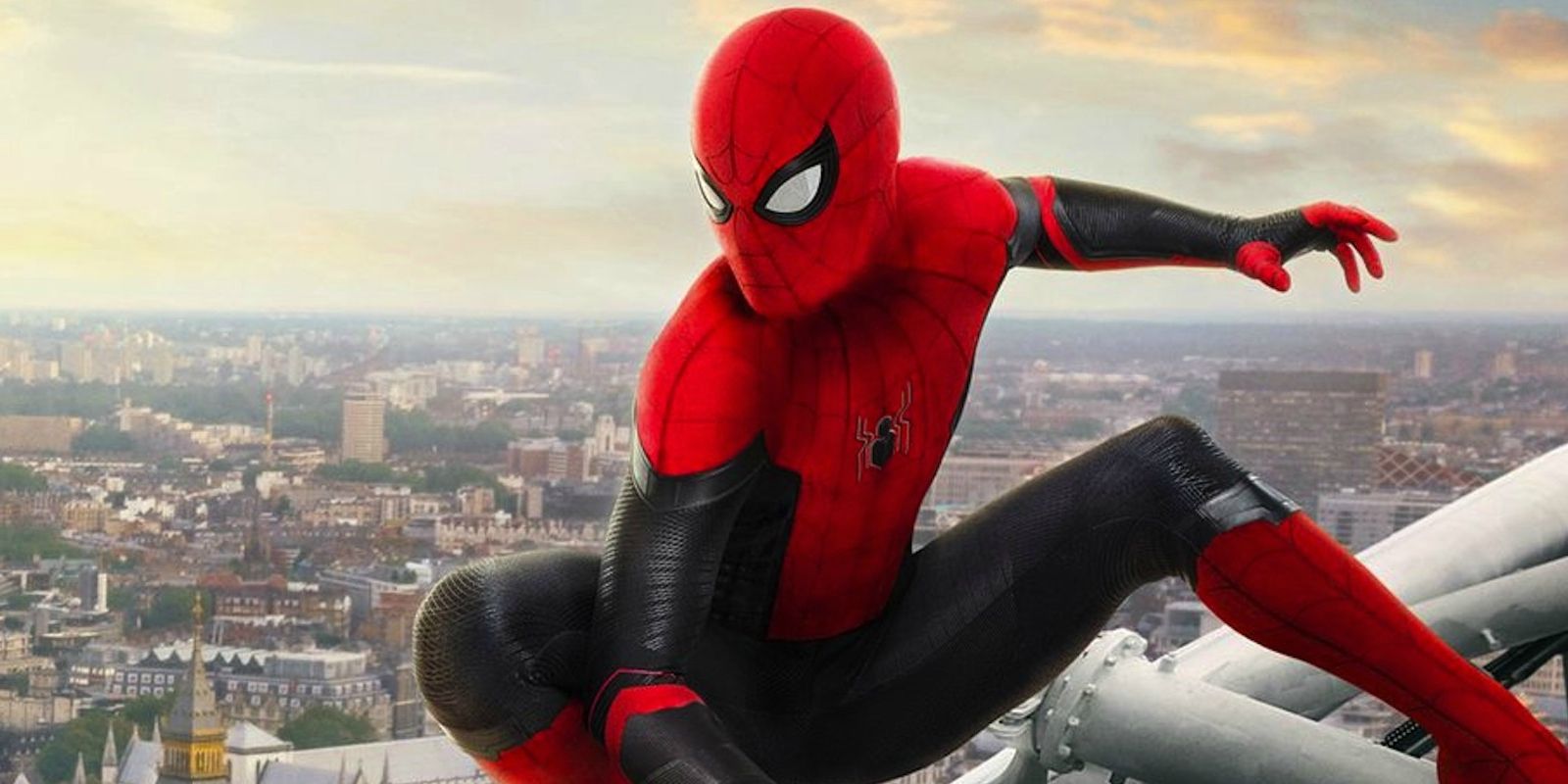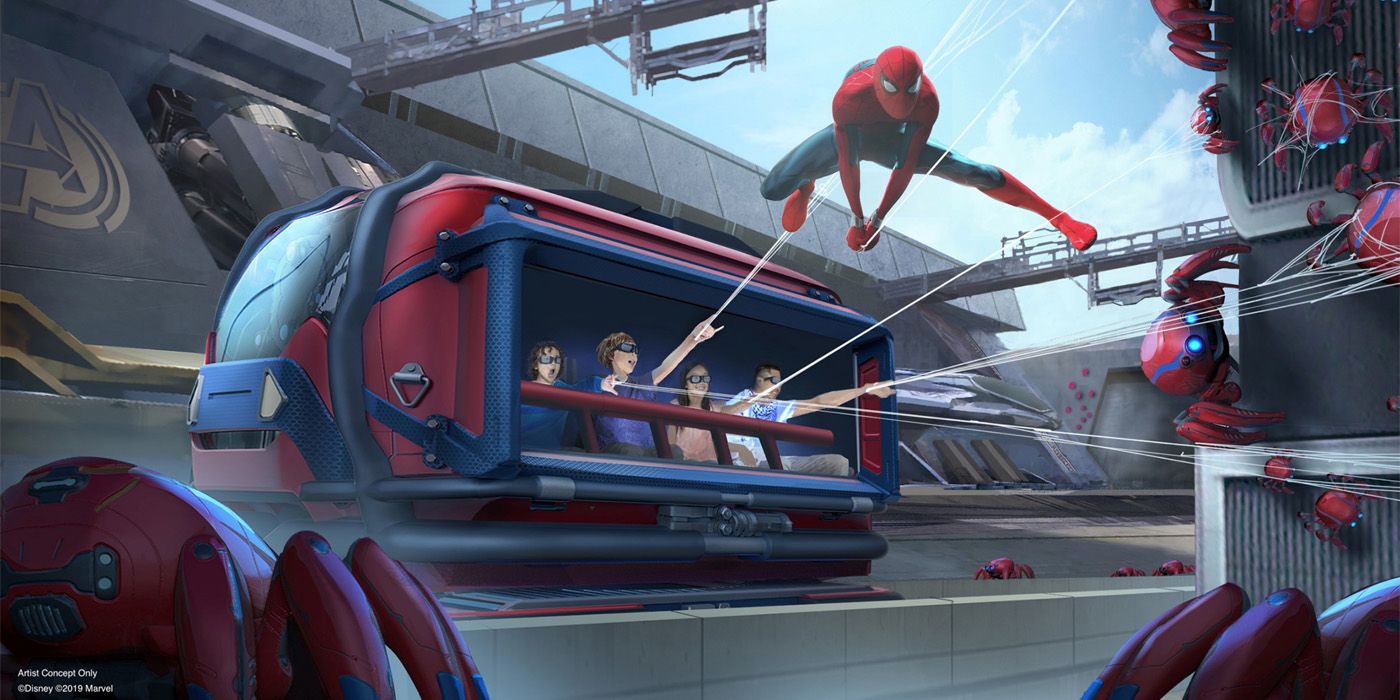Walt Disney Imagineers revealed the secret to making Spider-Man soar over the theme park's new Avengers Campus. The highly-anticipated addition to Disneyland in California puts fans at the center of the Marvel Cinematic Universe. Featuring amazing attractions like Web-Slingers: A Spider-Man Adventure and Guardians of the Galaxy - Mission: Breakout!, the brand new area teams visitors up with their favorite super heroes. Thanks to character encounters and park events, fans also get to tap into their own inner super-self.
After years of planning, the Avengers Campus was set to open in July of 2020. Of course, the COVID-19 pandemic put a stop to that, shutting down all theme parks. When Disneyland safely reopened in April of 2021, the powers that be slated a new grand opening date for the sparkling park expansion. On June 4, the Avengers Campus finally opened to the public. Lucky first guests were dazzled by the immersive rides, themed restaurants, live shows and one high-flying robot. A Spider-Man "Stuntronics" android soars into the air with humanlike dexterity before patrons.
Walt Disney Imagineers Tony Dohi and Morgan Pope spilled their secrets to the LA Times, revealing how they achieved the spectacular feat. While everyone agreed that Peter Parker's heroic alter ego needed to have a strong presence in the park, Imagineers knew human limitations would stop them from achieving what they wanted. So, Dohi said the team turned to cutting-edge robot technology:
"Because 'the most natural way for Spider-Man to fly through the air is with a web,' Dohi and his team devised an advanced slingshot system involving a line and a 'very, very, very powerful motor' capable of launching various flight combinations, or 'throws,' on repeat.
When suspended, the sensor-equipped machine is programmed to rotate and glide in a way that mimics human movement, which required the Imagineers to abide by pioneering physicist Isaac Newton's third law of motion (every action has an equal and opposite reaction) while carefully choreographing an 'aerial ballet.'"
Imagineers' tireless efforts to swap out a human performer with something more outstanding paid off. Even so, gravity remained a nemesis. As they plotted the 95-pound anthropomorphic android's trajectory, the designers had to devise a safe landing for their expensive "Stuntron." They ended up creating an elaborate system to slow down Spidey as he descends into a net, keeping their robot safe and providing a glittering visual for viewers.
To ensure the whole ordeal didn't look too perfect, the team programmed their stunt bot to move more like an out of control teenager. This is achieved by the mechanics going on underneath the iconic red and blue suit. While Robot Spidey began as a simple z-shaped stick figure prototype, the final version is a much more complex and intelligent piece of machinery. Essentially built with three main links and connecting hinges, at its core the simple structure emulates human movement in a not-so human scenario.
Not only is "Stuntronics" an incredible enhancement for theme parks, but it could prove to be so for the entertainment industry as a whole. Once perfected, the use of anthropomorphic androids, like the one found in Avengers Campus, could be a safer on-set option for movie studios. Since the shiny technology currently floats in uncharted waters the price is high, but as it becomes more commonplace perhaps the MCU will employ stunt robots. Of course, there's nothing like watching an actual skilled human stunt performer get the job done.
Source: LA Times


